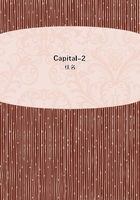
第40章
c ---| m --- c C is presupposed twice outside the circuit. The first time in the circuit C'---M'---C< L MP . This C, so far as it consists of MP, is commodity in the hands of the seller; it is itself commodity-capital, so far as it is the product of a capitalist process of production; and even if it is not, it appears as commodity-capital in the hands of the merchant. The second time, in the second c of c---m---c, which must likewise be at hand as a commodity so that it can be bought. At any rate, whether they are commodity-capital or not, L and MP are just as much commodities as is C' and bear to each other the relation of commodities. The same is true of the second c in c---m---c. Inasmuch therefore as C' is equal to C (L plus MP), it has commodities as elements for its own production and must be replaced by the same commodities in the circulation. In the same way the second c in c---m---c must be replaced by similar commodities in the circulation.
On the basis that the capitalist mode of production is the prevailing mode, all commodities in the hands of the seller must, besides, be commodity-capital.
And they continue to be so in the hands of the merchant or become such if they were not such before. Or they have to be commodities -- such as imported articles -- which replace original commodity-capital and hence bestow upon it merely another form of existence.
As forms of existence of P the commodity-elements L and MP, of which the productive capital P consists, do not possess the same form as in the various commodity markets where they are fetched. They are now united, and so combined they can perform the functions of productive capital.
That C appears as the premise of C only in this Form III, within the circuit itself, is due to capital in commodity-form being its starting point. The circuit is opened by the transformation of C' (in so far as it functions as capital-value, regardless of whether it has been increased by the addition of surplus-value or not) into those commodities which are its elements of production. But this transformation comprises the entire process of circulation, C---M---C (equal to L plus MP), and is its result.
C here stands at both extremes, but the second extreme, which receives its form C by means of M---C from outside, the commodity-market, is not the last extreme of the circuit but only of its first two stages comprising the process of circulation. Its result is P, which then performs its function, the process of production. It is only as the result of this process, hence not as that of the circulation process, that C' appears as the terminal point of the circuit and in the same form as the starting-point, C'. On the other hand in M ... M' and P ... P, the final extremes M' and P are the direct results of the process of circulation. Here therefore it is presupposed only at the end that one time M' and the other time P exist in the hands of others. In so far as the circuit is made between the extremes, neither M in the one case nor P in the other -- the existence of M as the money of another person and of P as the production process of another capital -- appears as the premise of these circuits. C' ... C' on the contrary presupposes the existence of C (equal to L plus MP) as commodities of others in the hands of others -- commodities drawn into the circuit by the introductory process of circulation and transformed into productive capital, as a result of whose functioning C' once more becomes the concluding form of the circuit.